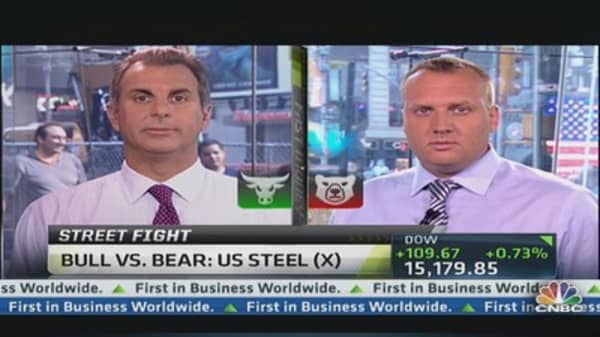(Read More: Analysts Debate Appeal of 'Sour' Brazilian Stocks)
Where once emerging markets were all the investing rage, they're now considered one of the areas most at risk of what happens when the U.S. central bank starts normalizing monetary policy.
In addition to keeping its funds rate target near zero, the Fed is buying $85 billion a month in Treasurys and mortgage-backed securities in the third version of its quantitative easing efforts since the financial crisis.
However, this week's Open Markets Committee meeting is expected to show indications that the program is nearing an end as the U.S. economy continues its modest recovery and Fed policy makers fear long-term consequences of QE.
(Read More: Markets More Doubtful of Fed Easing Benefits: Survey)
The first two easing rounds saw strong EM inflows and resulting stock market outperformance.
"But QE3 has been different," said John Higgins, chief markets economist at Capital Economics. "This may partly reflects a valid concern that QE is on borrowed time."
Indeed, the MSCI Emerging Markets Index has tumbled 9.3 percent in 2013 after delivering 11 percent annualized returns over the past 10 years. An index that focuses specifically on the so-called BRIC nations—Brazil, Russia, India and China—has sagged 11.7 percent following a 10-year track record of 13 percent gains.
"Recent data suggest that net capital inflows into emerging markets fell significantly in May and in the first half of June amid renewed concerns about a potential tapering of the Fed's asset purchases," Jessop said in a note.
"Although the scaling back of the U.S. central bank's quantitative easing could continue to weigh on EM assets, we doubt the latest retreat will turn into a full-blown exodus," he added.
However, fund managers are positioning themselves for just such a flight.
(Read More: Active Managers Take a Beating, Thanks to Apple)
The June Bank of America Merrill Lynch Fund Manager Survey found investor interest in emerging markets at its lowest level since December 2008. The number of managers saying they would underweight China specifically hit a net 25 percent, the worst view on the region in the survey's history.
Among the fears is that a Fed exit will see dollar strength and weakness among EM currencies, which will help reduce trade deficits but also could be inflationary, said Strategas analyst Mary Catherine Sinclair.
"Already we have seen Brazil, Indonesia, India, and Thailand make preparations to try to counteract any effects of Federal Reserve tapering," Sinclair said. "Once the Federal Reserve announces a pullback of accommodation there will likely be many more countries joining the trade."
—By CNBC's Jeff Cox. Follow him @JeffCoxCNBCcom on Twitter.





